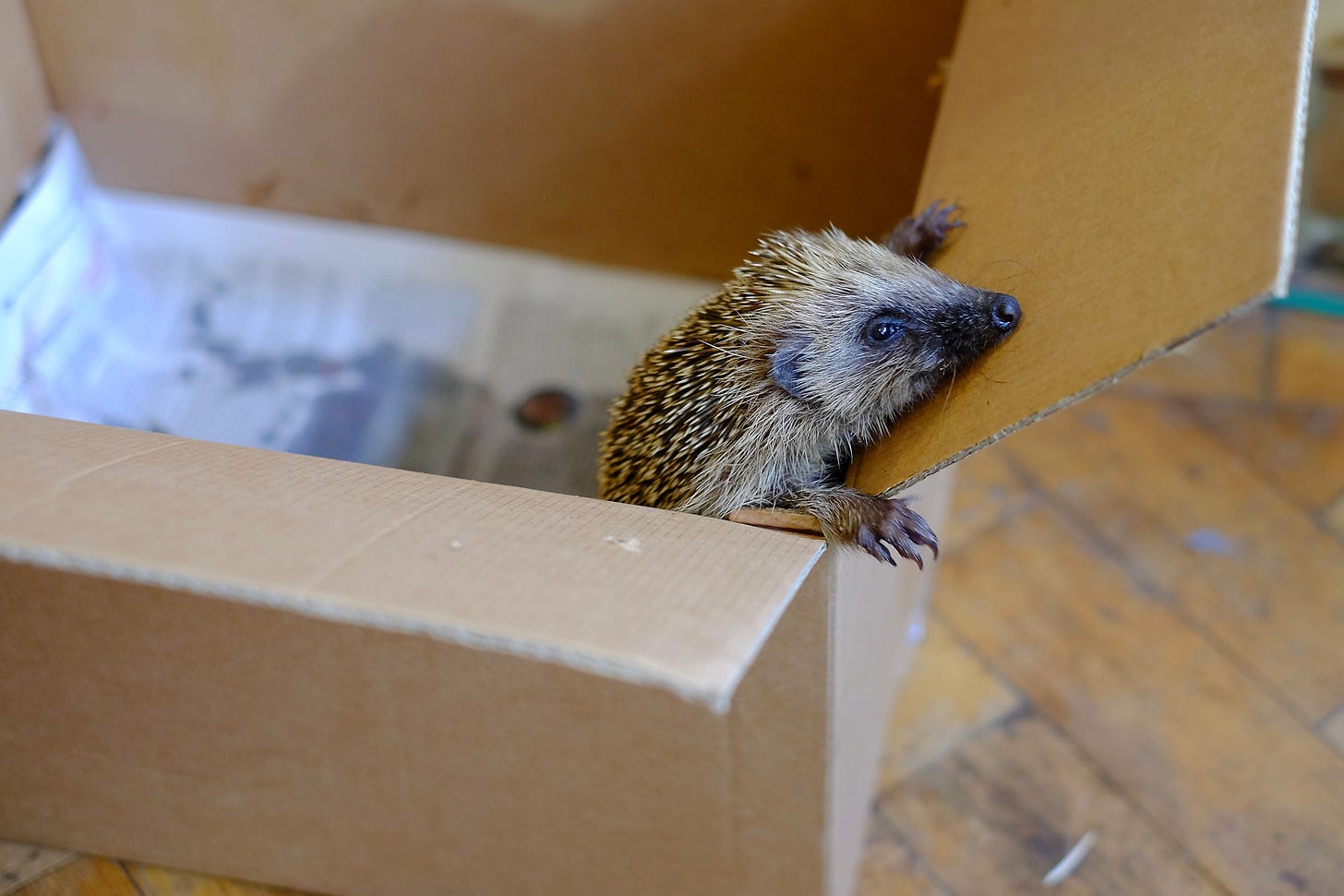“More than one in three tree species worldwide faces extinction - IUCN Red List” is the headline that has, rightly, been grabbing headlines. The Global Tree Assessment is part of the update for the IUCN Red List of Threatened Species.

And in that update there is also some fascinating, not surprising, and important news. European hedgehogs - ‘our’ hedgehog - have had their status raised from Least Concern to Near Threatened.
Now, the sharp-eyed among you may wonder what is going on … hasn’t the hedgehog already been elevated to the status of Vulnerable to Extinction?
Well, yes, that is true for Britain. But the range of this species covers a large chunk of the continent - and until now there has not been the data to allow the people who oversee the important Red Lists to make the decision.
Hedgehog numbers are thought to have shrunk in more than half the countries where they live, including the UK, Norway, Sweden, Denmark, Belgium, the Netherlands, Germany and Austria. The IUCN press release goes on to say, ‘Nationally, numbers have reduced by an estimated 16-33% over the past ten years, with local studies also reporting declines of up to 50% in Bavaria, Germany, and Flanders, Belgium. Increasing human pressures, particularly the degradation of rural habitats by agricultural intensification, roads and urban development, are driving declines of the Western European Hedgehog.’
‘Regional and national action is essential to support hedgehog populations, through initiatives such as “Hedgehog Street” in the UK and “Danmarks Pindsvin” in Denmark,’ said Dr Abi Gazzard, Programme Officer of the IUCN SSC Small Mammal Specialist Group. ‘The Red List assessment also reveals where there are knowledge gaps, for example, regarding the limits of the species’ distribution. Increased monitoring throughout Europe is essential to learn more about lesser-studied populations.’
I really recommend a look at the detailed report.
In particular - look at how widespread ‘our’ hedgehog is. It always amazes me that this little bundle of prickles can be found in Norway and Spain! The fact that it has the capacity to cope with such a variety of environments - and yet is now fading away - is a stark statement of the damage we have been causing to the natural world.
One of the authors of the report, my friend Dr Sophie Lund Rasmussen said, ‘It is my hope that this status change will generate more attention and support for the important research uncovering the reasons for the decline and what we can do to mitigate this, and conservation work we have ahead of us to help preserve this iconic ambassador species in the wild, allowing future generations to encounter the charming and fascinating, little prickly creatures in their gardens at night.’
Now - before I go - ANOTHER reminder about bonfire night and the BHPS clear messaging - STOP, MOVE, CHECK
And finally - very soon - the new daily gardening online magazine is leaping into life on 1st November - and my first piece will be out on the 4th … sign up (though this is not free).




THIS DOES NOT SURPRISE ME . LESS GREEN SPACES FOR OUR WILDLIFE TOO MANY HOMES BEEN BUILT, MORE WILDLIFE SEARCHING FOR FOOD IN GARDENS .THINGS HAVE TO CHANGE FOR THE WILD LIFE OTHERWISE THEY ALL DIE.
How sad that hedgehogs are now on the extinction list. I believe this is because of humans destroying their natural habitat also due to climate change which we have also caused. Thank you for everything you do for the hedgehogs and for making us aware of these beautiful yet vulnerable creatures. I hope future generations will become concerned about this enough to help.